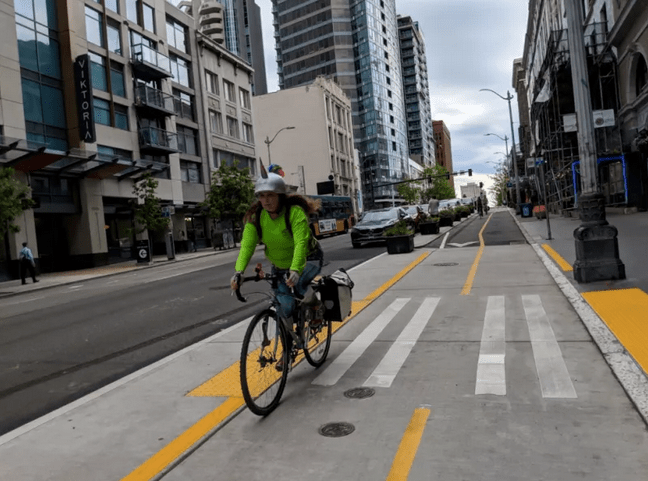Bike ridership jumped more than 413 percent after Seattle upgraded a key corridor from a mere painted bike lane into a beefier protected version, a city official revealed on Thursday.
Department of Transportation lead engineer Dongho Chang tweeted about the surge along Second Avenue as a way to highlight the game-changing power of a protected lane versus a painted lane.
"Downtown has always been a challenging area for people to ride, especially with our hilly terrain," Chang posted on social media. "The numbers show that people will use bicycle facilities when it is more comfortable and thoughtfully connected.
The project began with a pilot in 2014 to convert a regular painted bike lane on Second Avenue into a curb-and-landscape-protected bike lane. An extension through downtown Seattle was completed last year, lengthening it to about one mile.
Watch what happened to daily ridership as the bike infrastructure upgrades progressed.
The protected bike lane project was costly by bike lane standards. At $12 million, it was the most expensive bike lane Seattle ever built (the cost was partially offset by $5 million in federal money). Rebuilding part of the street to make a very well protected lane required some utility relocation.
When it opened, Seattle Bike Blog said it "revolutionized biking" in downtown Seattle. The city of Seattle keeps an automatic bike counter on the street. It reports about 83,000 trips since December.
Seattle was at one time a leader on sustainable transportation, but new Mayor Jenny Durkan has killed plans for a bike lane on 35th Avenue NE, a dangerous thoroughfare which has been proposed for bike lanes for a decade. And she has infuriated safe streets advocates in the city by revising the city's Bike Plan, and cutting a dozen projects.
The moves represent a real turnaround, as Seattle's earlier efforts had been seen as among the country's most successful.
Seattle is obviously not the first city to experience massive increases in cycling after a protected lane is installed. Toronto claimed a 300-percent hike on Sherborne Street. And, more generally, New York says cycling is up 70 percent since 2011, when the city truly began expanding its vast protected bike lane network.
"Miles of protected on-street bike lanes are emboldening the more cautious and risk-averse New Yorkers to take to the streets on a bike," the city's DOT said in its semi-annual "Cycling in the City" report.






